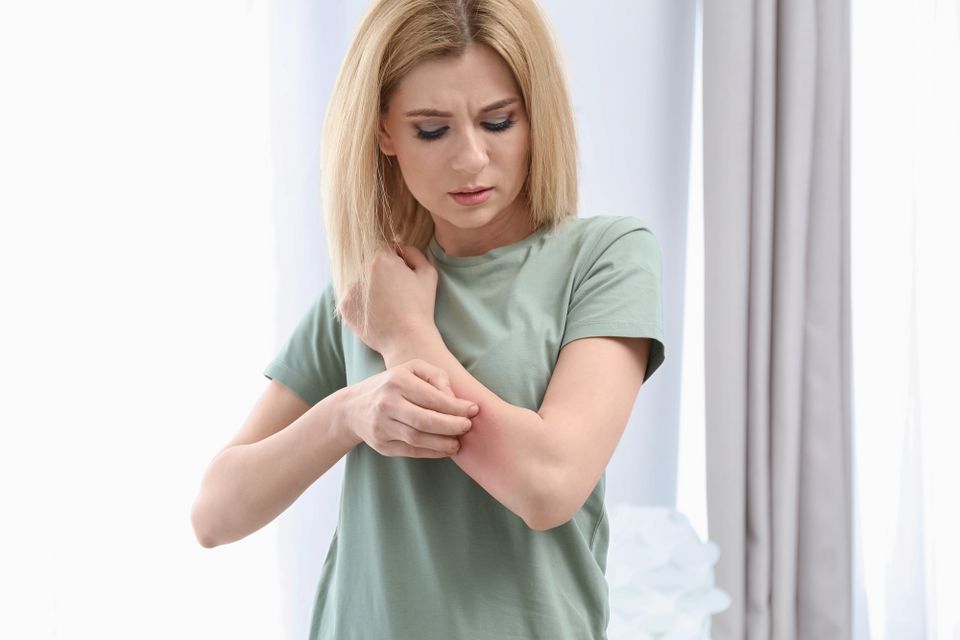

October 26, 2025
Dry Skin & Rashes: Fall Triggers You Shouldn’t Ignore - Meridian, Idaho

As the weather begins to cool down, many people in the Treasure Valley notice their skin starting to feel different. The crisp air, lower humidity, and indoor heating can all come together to cause one frustrating outcome: dry, itchy skin. For some, this is just a seasonal annoyance, but for others, it can trigger more serious skin concerns such as eczema flare-ups, contact dermatitis, or even early signs of precancerous changes like actinic keratosis.
Fall is a season when it is easy to overlook skin health. With more layers of clothing and less direct sun exposure, new rashes or rough patches may go unnoticed. However, changes in your skin during this time of year should not be ignored. Persistent dry skin, scaly patches, or lesions that don’t heal may require more than over-the-counter creams; they may need the expertise of a medical dermatologist.
At Mountain Pine Dermatology, our team provides comprehensive medical dermatology services, including eczema treatment, contact dermatitis care, and skin cancer screenings. Understanding why fall skin problems happen and knowing when to seek care is the first step to protecting your skin year-round.
How Does Cooler Weather Affect Your Skin?
When fall arrives in Idaho, the sudden drop in temperature and humidity can have a major impact on your skin. While summer’s heat brings its own challenges, the transition into cooler months often leads to dry, irritated skin that feels tight, itchy, or flaky.
Here’s why:
-
Lower humidity outdoors – Cool air naturally holds less moisture, causing your skin to lose hydration faster.
-
Indoor heating systems – Furnaces and space heaters create a dry environment inside your home, stripping away the skin’s moisture even further.
-
Hot showers and baths—Many people take longer, hotter showers, which can—you guessed it—dry out their skin.
-
Fall allergens and irritants – Yard work, raking leaves, and exposure to mold spores or household cleaning products can lead to contact dermatitis, a common skin rash in autumn.
Even people with generally healthy skin can develop problems during this seasonal shift. For those who already struggle with conditions like eczema, psoriasis, or actinic keratosis, the cooler months can trigger flare-ups or worsen existing spots.
The key takeaway? If your skin feels persistently irritated, itchy, or develops rough patches that don’t heal, it’s time to consult a dermatologist at Mountain Pine Dermatology in Meridian for a professional evaluation and treatment.
Common Fall Skin Conditions
Not all fall skin problems are the same. While some issues are temporary and caused by dryness, others may be signs of an underlying condition that needs medical care. Here are the most common skin concerns we see at Mountain Pine Dermatology during the cooler months.
Eczema Flare-Ups
Eczema (also called atopic dermatitis) often worsens in fall and winter. The lack of humidity dries out the skin barrier, making it easier for irritants to cause itching, redness, and cracked skin. Children and adults alike can experience flare-ups that interfere with sleep and daily comfort.Signs of eczema flare-ups include:
-
Dry, scaly patches on the hands, arms, legs, or face
-
Intense itching, especially at night
-
Inflamed, cracked, or bleeding skin
Contact Dermatitis
Fall also brings new environmental irritants that can cause contact dermatitis, a type of skin rash triggered by direct exposure to allergens or irritants. Raking leaves, handling firewood, using scented candles, or switching laundry detergents can all spark itchy, red, blistered patches of skin.There are two main types of contact dermatitis:
-
Irritant contact dermatitis – caused by direct exposure to soaps, cleaners, or chemicals.
-
Allergic contact dermatitis – triggered by allergens such as poison ivy, nickel, or fragrances.
Actinic Keratosis: Early Warning Sign of Skin Cancer
Perhaps the most important condition to watch for in the fall is actinic keratosis. These rough, scaly patches of skin often develop after years of sun exposure and are considered precancerous. While they may seem like harmless dry spots, actinic keratoses can progress into squamous cell carcinoma, a common type of skin cancer.Warning signs of actinic keratosis include:
-
Rough, sandpaper-like patches on the face, scalp, ears, or hands
-
Red, pink, or brown discoloration
-
Lesions that don’t heal or keep returning
When Dry Skin Turns into a Bigger Skin Problem
Most people think of fall dry skin as a simple seasonal nuisance—but sometimes it can be a sign of something more concerning. While mild flaking or tightness usually responds well to moisturizers, certain symptoms suggest the need for medical evaluation.
Warning signs that dry skin may actually be a skin condition include:
-
Persistent rough patches that don’t improve with moisturizers
-
Scaly or crusted spots that feel more like sandpaper than simple dryness
-
Lesions that bleed, crack, or don’t heal after several weeks
-
New or changing spots that look different from the rest of your skin
